Pilates is a whole-body form of exercise that helps you tone your muscles, strengthen your core, improve your flexibility, and enhance your posture. As the name indicates, mat Pilates is performed on a mat, so you'll definitely need one to get started with Pilates. But how thick should your Pilates mat be? We have all the answers you need.
A standard Pilates mat is between 3/8 and 1/2-inch (9.5-13mm) thick. This is thicker than many other commonly available exercise mats, including yoga mats.
Keep reading for more information on choosing the right Pilates mat thickness. We'll tell you why Pilates mats are so thick and why they're thicker than yoga mats, what materials workout mats are made of, and whether mat Pilates is an effective form of exercise.
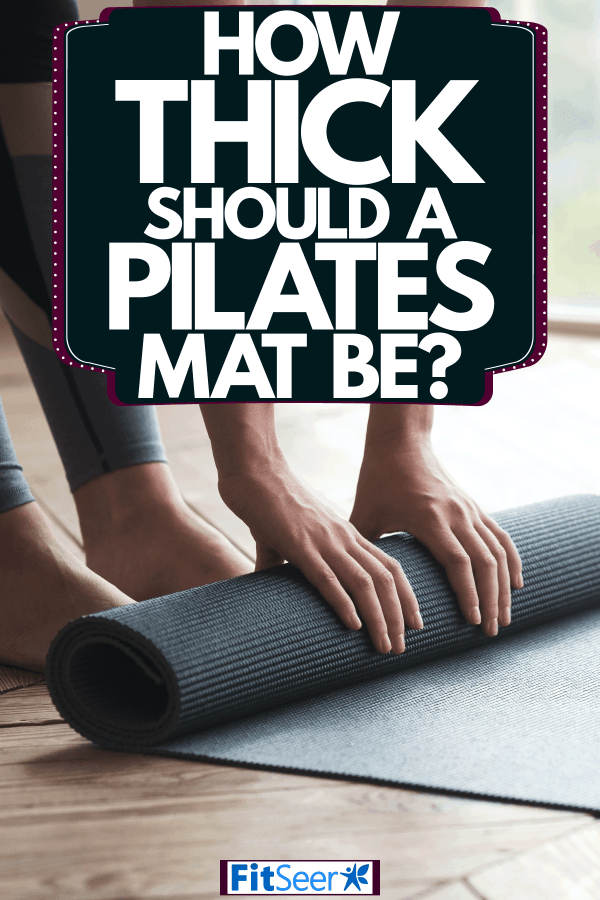
All About Pilates Mat Thickness
You'll want to select a Pilates mat that is at least 3/8-inch (9.5mm) to 1/2-inch (13mm) thick. You can also often find Pilates mats up to 1-inch (25mm) thick. When selecting a mat specifically for Pilates, thicker is better than thinner, so you'll want to pay attention to this detail when comparing mats.
Click here to check out this 1/2-inch-thick Pilates mat on Amazon.
Why Are Pilates Mats Thick?
Pilates mats are thick because a thicker mat provides more cushioning and support when performing Pilates. Most Pilates exercises focus on your abs, legs, and glutes.
In a typical Pilates workout, you spend much of the time lying on your back or propped up on your side to target these areas. Many exercises are also performed seated or kneeling, but you rarely stand while performing Pilates.
A more padded mat makes completing these exercises more comfortable. The thinner the mat, the more you will feel the ground with your spine, hips, elbows, or knees. Depending on how long you spend in a particular position, this can be quite painful if you don't have adequate padding.
You are far more likely to carry through with your complete workout and not short-change yourself on certain movements if you aren't experiencing discomfort beyond the basic muscle burn you hope to achieve from exercising. If you adjust from the proper position to keep a bone from digging into the ground, you might not get the desired result from that particular exercise, or you could twist or tweak a joint and end up injured.
A thicker mat will help ensure you get the maximum benefit from your Pilates workout and make sure it's always a fun and enjoyable exercise experience.
Click here to check out this extra-thick Pilates mat on Amazon.
Are Pilates Mats Thicker than Yoga Mats?
Pilates mats are thicker than yoga mats. While Pilates mats are up to 1/2-inch thick, most yoga mats are only 1/4-inch thick. The difference in thickness is due to the difference in the various exercises you perform with each.
Although you'll find some similarities across the various exercises you perform in Pilates and yoga, especially those that focus on abs, the two exercise formats are not the same.
In many yoga classes, you could spend as much or more time standing on your feet as you do lying on your mat. Standing and balancing poses require a stable surface. You want to be able to feel the ground with your feet to achieve proper form. The thicker and more cushioned the mat, the less stability you will have. This makes a thinner mat more preferable than a thick one for yoga.
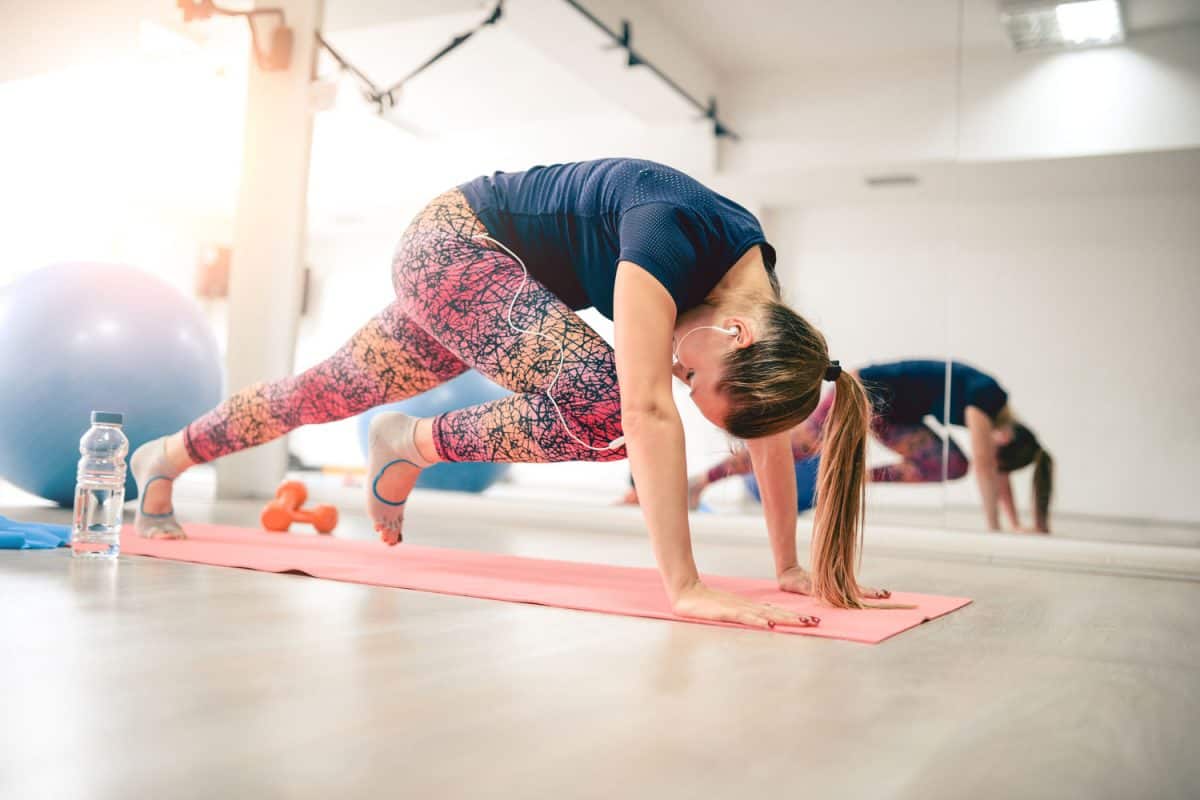
Because you don't stand much in Pilates, you don't need to worry about whether you can balance on your mat, and you can opt for a thicker one that provides more cushioning instead.
What Are Workout Mats Made Of?
Workout mats are made from a wide variety of materials, both synthetic and natural. The most common material used for exercise mats is synthetic PVC foam. Other synthetic foam materials used to make mats include TPE (thermoplastic elastomer) and NBR (nitrile butadiene rubber).
Click here to check out this TPE Pilates mat on Amazon.
Click here to check out this NBR Pilates mat on Amazon.
Natural materials that workout mats are made from include rubber, cork, cotton, hemp, or jute. If you're looking for a non-toxic mat, you'll want to opt for one of these.
Click here to check out this natural cork/rubber mat on Amazon.
Click here to check out this natural jute mat on Amazon.
You can also find mats that are made from recycled materials, or recyclable themselves; these could be either natural or synthetic.
Click here to check out this mat made from recycled wetsuits on Amazon.
Is Mat Pilates Effective?
Mat Pilates is an extremely effective workout for building your core strength, toning your legs and glutes, and improving your flexibility. You will strengthen both your abs and back, which will help improve both your balance and posture.
Increasing your flexibility also helps you improve your mobility. This will help not only in your daily life, but also can help make your other workouts more effective. Even hardcore weightlifters can benefit from Pilates because increasing your range of motion will help you get more out of your workouts and help prevent injury.
Those suffering from lower back pain can benefit from Pilates since weak ab muscles and tight hamstrings often contribute to these issues, and Pilates targets both.
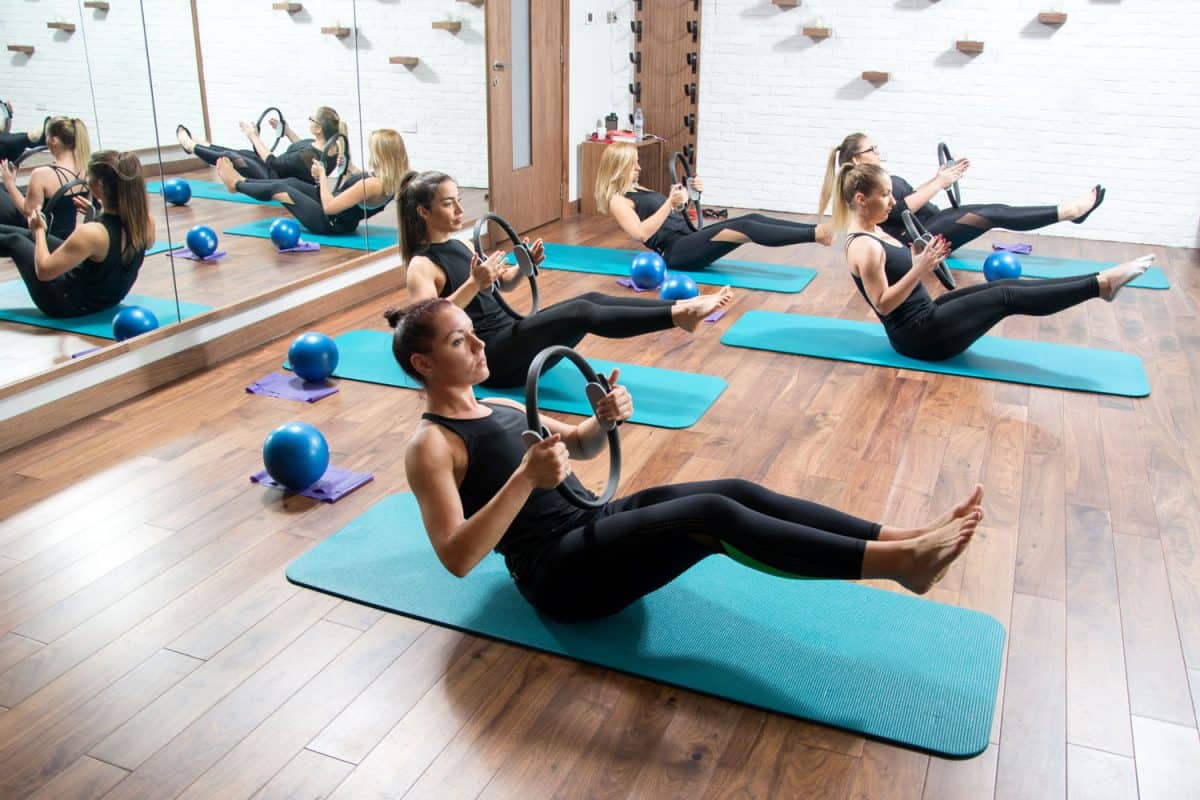
Pilates is ideal for those hoping to develop lean, toned muscles throughout their whole body. It's especially beneficial for toning your stomach and reducing belly fat.
However, if you're hoping to build bulky muscles rather than simply strengthen and tone, Pilates on its own might not be enough to help you reach your goals. In this case, you might want to include traditional weightlifting workouts along with performing Pilates.
Similarly, for those hoping to lose weight, Pilates alone might not help you achieve your weight-loss goals. Because Pilates is low impact, you might not burn quite as many calories as you would with some other exercises. To lose weight faster, you'll want to incorporate some cardio exercises like walking, running, dancing, or swimming along with your Pilates workouts.
How to Get the Most from Pilates?
To get the maximum benefit from performing Pilates, you'll want to make sure you're performing it regularly. Performing Pilates two to three times a week is a good target for beginners. Even if you only have time to do Pilates once a week, the most important thing is that you stick with it.
Every time you perform a specific exercise, your form, endurance, and ability to execute it will improve. Even if a particular move seems impossible at first, if you keep working at it and don't give up, you may soon surprise yourself.
Check out our article, How Long Should A Pilates Session Be [And How Often To Do Them], for more info on how often you should do Pilates.
You can also maximize the results you get from Pilates by increasing the intensity. Beginners should start with basic mat Pilates, but as you gain experience, you can incorporate additional equipment. Wrist and ankle weights or resistance bands can increase the strength and resistance required to complete certain moves, which will help you build muscle faster.
Click here to check out these wrist/ankle weights on Amazon.
Click here to check out these resistance bands on Amazon.
A Pilates ring, or magic circle, is another piece of equipment you can include in your Pilates workouts. Similar to weights or bands, it can help increase the resistance and intensity of your workouts. A Pilates ring can also help you replicate some of the movements that you normally could only perform in a Pilates studio using a Reformer machine.
Click here to check out this Pilates ring on Amazon.
Check out our article, What Do You Need For Pilates At Home? [The Complete List], for more info on equipment you might want to add to your Pilates workouts.
In Closing
A thick Pilates mat will help you get the best results from your Pilates workouts, making it more comfortable and enjoyable. A Pilates mat between 3/8 and 1/2-inch (9.5-13mm) thick should work for most people. If you also plan to perform yoga, using a separate mat for each is recommended. Choosing a mat with the proper thickness for either Pilates or yoga is the first step in ensuring a safe, fun, and more effective workout.





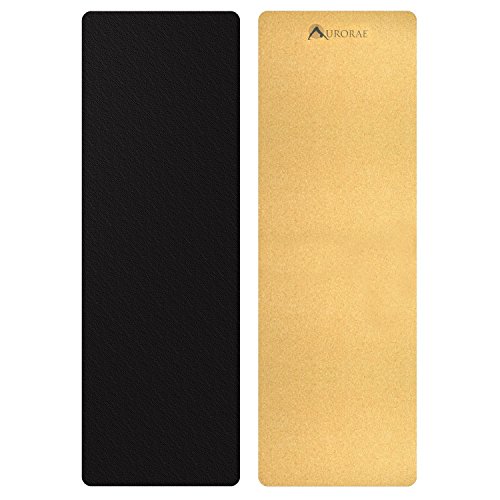






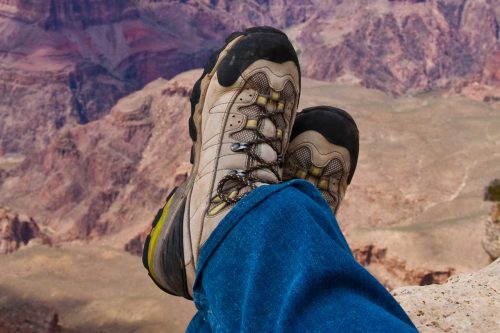
![Read more about the article At What Age Can You Start Surfing? [And At What Age Should You Stop?]](https://fitseer.com/wp-content/uploads/2020/11/A-surfer-wearing-a-white-shirt-and-aloha-pants-riding-the-waves-of-a-blue-ocean-500x333.jpg)
![Read more about the article What Are The Best Socks For Pilates? [7 Suggestions]](https://fitseer.com/wp-content/uploads/2020/10/Woman-stretching-her-legs-and-limbs-on-a-yoga-mat-before-starting-stretching-500x333.jpg)

